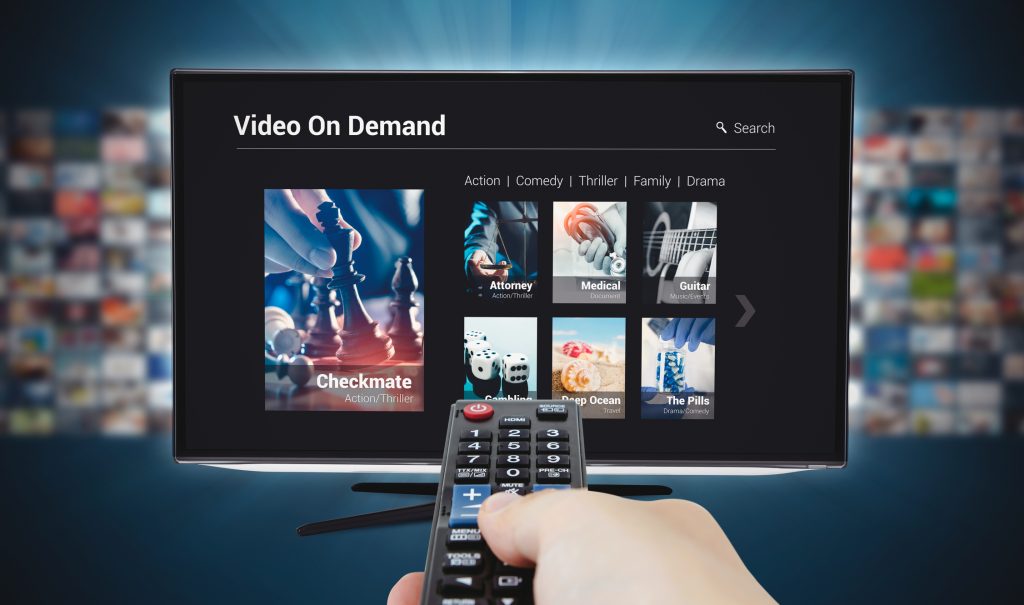Digital TV: How to get free to air channels without an antenna
Index
How to watch TV without an antenna
Wondering how to watch tv without an aerial socket in Australia? You’re not the only one! This has been the most innovative advancements in the way we watch television since the inception of colour television. Australian households made the switch to digital transmission back in 2013, with the help of a significant media education campaign that encouraged the switch to digital. Analogue technology was phased out completely so that now only digital televisions receive audio and video signals.
All the Australian free-to-air television networks are now available on digital televisions and smart TVs, but if you still have an analogue TV, you can access them with a digital set-top box.
In this article, we explore how to get free to air tv on a smart tv or analogue tv, how to watch tv without an antenna in Australia, the benefits of digital tv and the various internet tv services available.

What is Digital TV?
Digital transmission is the new form of television signal that replaced the analogue transmission method that Australian viewers used for decades. Digital television uses digitally processed and multiplexed audio and video signals to transmit sound and images to your TV screen.
Using digital transmissions to broadcast audio and video, digital TV is more advanced than the analogue transmissions from decades past. It’s the biggest leap in television technology since the advent of colour televisions in the 1950s.
Digital TV offers superior quality, more variety, and more accessibility than its analogue counterpart. It also enables the broadcasting of high-definition (HD) television formats that provide resolutions that are much greater than standard definition. With digital TV, users are able to watch more than one programme on the same channel bandwidth, which is why we can now watch one television show while simultaneously recording another.
Your existing antenna should not need upgrading in order to receive digital transmission. In some cases, aerials more than ten years old may need to be replaced with a digital antenna. If you have a good aerial antenna and you live in an area with a solid signal, you will simply be able to plug your new digital TV into it and go from there.
Want to get a Digital TV installed in Sydney
Advantages of Digital TV
Digital television has many advantages over analogue reception. Digital channels take up less bandwidth which means that more channels can be streamed to your television and some channels may even have the ability to offer more than one program at a time. Non television multimedia applications such as web browsing, music streaming and video games are also features of new digital televisions that were not possible with analogue television.
Electronic program guides and additional spoken and subtitled languages are also features of the digital television age. The high definition service provided by digital transmission means that your picture will be clearer, sharper and stronger than the picture you were accustomed to on your analogue television.
What are the benefits of Digital TV?
Here’s a snapshot of the benefits of digital TV:
- Superior picture quality
- Clearer reception
- Digital quality stereo sound
- A whole new range of channels
- Digital radio
Television sets with only analogue tuners are unable to decode digital transmissions. This is why in 2013, homes with only analogue televisions needed to convert to digital in order to view any television transmission at all.
New TVs – plasma, LCD or LED LCD – feature integrated HD digital tuners. All new televisions are clearly labelled accordingly. Look out for labels that show HD or HDTV. New HD TVs are available from a few hundred to several thousand dollars, depending on their size and technical capabilities.

Do I need to buy a new TV to watch digital television?
Purchasing a digital television is only one way of making the switch to digital. You may opt to keep your analogue television but you will need to purchase a converter box to be able to tune in to digital channels (analogue channels no longer work). The “set top” converter box acts as a digital link between the analogue television and the television aerial. A new digital television is already equipped with the technology necessary to plug directly into the TV antenna.
What about my TV antenna?
Your existing TV aerial or antenna should not need upgrading in order to receive digital transmission. In some cases, aerials more than ten years old may need to be replaced with a digital antenna. If you have a good aerial and you live in an area with a good signal, you can simply plug your new digital TV in and go from there. In some regions, there is poor or nil digital reception so if this is the case for you, you will need to contact an antenna specialist for advice.
Different types of digital antennas
The performance and clarity of your TV picture will depend on your antenna’s size, design and how it was installed. There are three main types of TV antennas on the market:
- Indoor antennas
- Outdoor antennas
- Loft antennas
The indoor antenna is one of the most simple antenna installations but it does not always perform very well with an inferior signal quality. If you live in an area where the TV signals are good, you may be fine with an indoor antenna but if it’s not working very well you can try to position the antenna near a window or higher location.
Outdoor antennas are the most popular type of digital tv antenna and have a much stronger signal than indoor antennas. Some types worth noting are the Log periodic antennas and the Yagi. Do your research before you choose as there are pros and cons to each. The Log periodic antennas have weaker signals than the Yagi but offer more channels.
A loft antenna is generally installed on the roof. In terms of signal, they function better than both indoor and outdoor antennas, but their installation is more complex and it’s recommended you get help from a professional.
How to diagnose a problem with a digital antenna
Old or new, your antenna is susceptible to issues that cause a loss of signal or bad reception. Here’s what to do:
- Take a look at your antenna outside (without climbing on the roof) and check you can see it and if all the parts are still attached firmly
- Assess whether it’s still pointing in the correct direction
- Go inside and check that the cables are inserted into the unit correctly
- With your remote, make sure the correct input is selected (antenna, HDMI1, video1, HDMI2, video2, etc)
- Re-tune your TV for an updated list of your subscribed channels
If your antenna is still not working properly, contact a local TV antenna installer for a professional assessment.

Can I still watch Digital TV without an antenna?
If you are wondering how to get free to air channels without an antenna, or if it is possible, you’ll be pleased to know that you can do so by watching content over the web using your digital TV. While you won’t need an antenna, you will need an internet connection that is set up to a smart TV.
How to watch free to air tv on smart tv? There are platforms you can take advantage of, such as Freeview, which launched the new FV service over the web. It brings together live streams and catch-up services from more than 20 FTA TV channels. Freeview is available via any current browser to give users access to the free FV website.
As well as streaming content, there’s a TV guide for all FTA channels. There is also a program recommendation tool to help you find content that may be of interest.
Want to get a Digital TV installed in Melbourne
Hang on, what are examples of Internet TV?
Want to know how to watch tv without antenna or a cable in Australia? All you need is WiFi! There are a variety of different internet TV subscriptions available to choose from. Many may recognise Netflix as one of the most popular options, but other examples of internet TV in Australia include:
- ABC iView
- Stan
- Foxtel
- Binge
- Amazon Prime
- Tenplay
- 9Now
- 7plus
- Hayu
- Fetch
- SBS on Demand
- Kayo
Even Amazon and Youtube have their own versions of internet TV these days, offering original programming that can stream right to your digital TV. Often in order to access the streaming services, users will have to pay a monthly fee.
Does Internet TV cost me money?
If you plan on using an internet streaming subscription in in order to access programming, you may have to pay for the service. One of the most well known and popular streaming services, Netflix, for example, charges about $10.99/month. Amazon offers a free 30-day trial and then charges $6.99/month, whereas SBS on Demand is free.
There are a variety of options, both free and paid, that offer many of the latest television series and movies that can be streamed at any time you like, as often as you like. Many offer free trials or introductory offers, so you can test out the service to decide if you want to stick with it or look elsewhere for your content.
